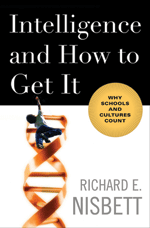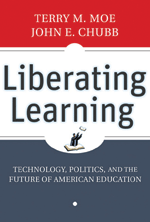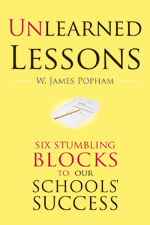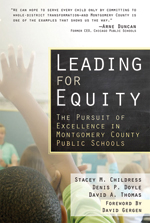 Intelligence and How to Get It: Why Schools and Cultures Count. Richard E. Nisbett (W.W. Norton).
Intelligence and How to Get It: Why Schools and Cultures Count. Richard E. Nisbett (W.W. Norton).
There is no end to the debate over intelligence: how to define and measure it, how much of it is hereditary versus environmentally determined, and the extent to which it can be altered via purposeful interventions. The latest book-length entry into this debate is University of Michigan psychology professor Richard Nisbett’s rebuttal of Charles Murray, Richard Herrnstein, Arthur Jensen, and other “hereditarians.” The volume also serves as a partial, if unintended, rebuttal of today’s “broader, bolder” crowd and their assertion that schools cannot boost the life prospects of poor children. With Howard Gardner and others, Nisbett contends that intelligence takes multiple forms; that traditional IQ (and achievement) tests fail to capture this rich variety; that environment and education play larger roles than genetics; and that a handful of purposeful schoolcentric interventions (e.g., KIPP, Reading Recovery, Perry Preschool) have shown promise in boosting the intelligence of poor and minority youngsters. He acknowledges, though, that home, family, and culture matter enormously, and that a major source of today’s gaps is the extraordinarily discrepant experiences that children have outside of school. This leads to advice for parents “to increase the intelligence of your child and yourself,” though Nisbett focuses on such “21st-century” skills as “problem-solving” rather than reading books, acquiring knowledge, and gaining understanding. Of course, the parents most apt to follow his recommendations already have kids on the upside of the learning gap.
 Liberating Learning: Technology, Politics, and the Future of American Education. Terry M. Moe and John E. Chubb (Jossey-Bass).
Liberating Learning: Technology, Politics, and the Future of American Education. Terry M. Moe and John E. Chubb (Jossey-Bass).
These two political scientists, authors of a best-selling provoucher publication, Politics, Markets and America’s Schools (Brookings, 1990), have shifted their bets from that spoke of the school-reform roulette wheel named “school voucher” to one marked “technological innovation.” The descriptions of the latest uses of educational technology both within schools and over the Internet are just as compelling as the evidence provided that teachers union leaders today are little more than modern Luddites. The latest publication is as much required reading as the one the authors penned 20 years ago, and it can be expected to spark almost as much controversy. But the analysis is better at isolating the political obstacles to be surmounted than identifying the political support for technological innovators who, according to Moe and Chubb, will nonetheless persevere. All the best.
 Unlearned Lessons: Six Stumbling Blocks to Our Schools’ Success. W. James Popham (Harvard Education Press).
Unlearned Lessons: Six Stumbling Blocks to Our Schools’ Success. W. James Popham (Harvard Education Press).
Testing impresario Jim Popham has penned a volume that mixes anecdote, personal experience, and scholarly analysis to ask why American schooling has had such a terrible time designing, adopting, or employing good assessment. Popham provides a pithy and highly readable treatment of key challenges in standards, testing, and assessment, one that is particularly timely as governors and influential supporters move to embrace some version of common standards (with hundreds of millions in federal dollars pledged to finance the ensuing tests). Popham argues that assessment in the United States has suffered from six crucial, recurring problems: too many curricular targets; the underutilization of classroom assessment; preoccupation with instructional process; the dearth of “affective” assessments, i.e., those focused on attitudes, interests, and values; instructionally insensitive accountability tests; and the reality that educators “know almost nothing about educational assessment.” Readers may take issue with some of Popham’s critiques and assertions, or the shape of his recommended remedy, which is explained in an enthusiastic treatment of Wyoming’s current assessment and accountability system. Even skeptics, however, would benefit from Popham’s insights regarding how and why high-quality assessment is a matter of politics, policy, and practice, as well as technical expertise.
 Leading for Equity: The Pursuit of Excellence in Montgomery County Public Schools. Stacey M. Childress, Denis P. Doyle, and David A. Thomas (Harvard Education Press).
Leading for Equity: The Pursuit of Excellence in Montgomery County Public Schools. Stacey M. Childress, Denis P. Doyle, and David A. Thomas (Harvard Education Press).
This self-described “celebration” of the Montgomery County Public Schools, a 140,000-student behemoth in the Washington, D.C., suburbs, is no doubt meant to add the district to the list of superstar systems worthy of national attention. No longer an exclusive enclave of affluence, the county has witnessed an influx of poor and minority students over the past quarter century. Ten years ago, Superintendent Jerry Weast divided the system into the leafy “Green Zone,” which he mostly (and benignly) ignored, and the struggling “Red Zone,” where he poured new resources, staff, and “capacity.” Test scores in the Red Zone are up, as is participation in Advancement Placement courses. The authors see much worth lauding, though one wishes for more of a critical eye. What to make of the white-black SAT test-score gap, for instance, which is bigger than ever? And is any of this replicable, anyway? Weast’s spending spree was enabled by the housing bubble, which pushed local property values—and property taxes—sky high, along with a liberal population willing to see its burgeoning tax revenue siphoned off to help needy students. For better or worse, history might show the “Leading for Equity” story to be a once-in-a-lifetime opportunity, not a model for others to emulate.


